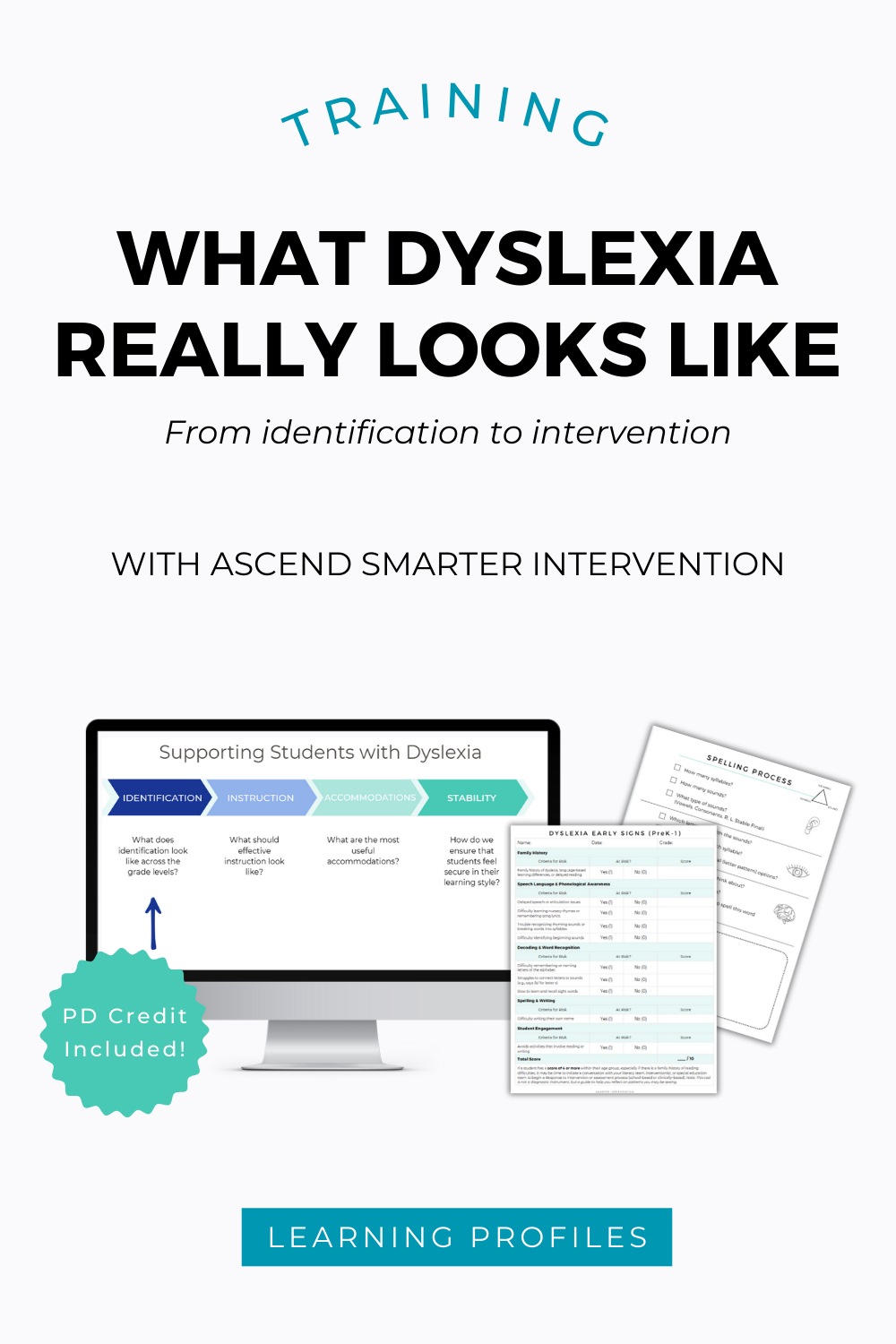Signs to Watch For if You are Concerned about Dyslexia
Whether you’re a parent, teacher, or interventionist, if you’re worried about a child who’s struggling with reading or spelling, you’re not alone.
We know how hard it can be to figure out whether a child is simply learning at their own pace, or if there’s something deeper going on, like dyslexia.
The good news?
There are early signs to watch for. And the earlier we notice them, the sooner we can support the child in the way they deserve.
What Is Dyslexia?
Dyslexia is a brain-based learning difference that affects how individuals process written language, especially phonological awareness, decoding, and spelling. According to the Yale Center for Dyslexia and Creativity, early signs often appear before formal reading instruction even begins. The sooner we can identify and address it, the more we can prevent long-term challenges.
Early Signs of Dyslexia (Preschool & Pre-K)
Even before kindergarten, some common signs may include:
Difficulty learning common nursery rhymes
Trouble remembering the names of letters in the alphabet
Inability to recognize letters in their own name
Persistent mispronunciation of words or “baby talk”
Struggling to recognize rhyming patterns (e.g., cat, bat, rat)
A family history of reading or spelling difficulties
Signs of Dyslexia in Kindergarten and 1st Grade
During these years, most children begin to associate letters with sounds, decode simple words, and build early reading fluency. Signs that may indicate dyslexia include:
Reading errors that don’t match the letters on the page (e.g., saying “puppy” instead of “dog”)
Difficulty segmenting and blending sounds in words
Struggles to remember sight words
Complaints that reading is “too hard” or avoidance of reading time
Difficulty associating letters with their sounds (e.g., not knowing that b says /b/)
A family history of reading challenges
Signs of Dyslexia in 2nd Grade and Beyond
As academic expectations increase, so do the demands on reading accuracy, fluency, and comprehension. At this stage, dyslexia often becomes more noticeable:
Slow, labored reading, even with familiar words
Guessing at words instead of sounding them out
Avoidance of reading aloud
Trouble with long or unfamiliar words (mispronunciation, skipping, substituting)
Frequent “tip of the tongue” struggles when speaking
Overuse of vague words (“thing,” “stuff”) and filler language (“um,” “uh”)
Confusion of similar-sounding words (e.g., “lotion” for “ocean”)
Slower processing time when answering questions
Want a printable reference?
We’ve created a free checklist that highlights the most common signs of dyslexia across ages and settings, including what to look for in conversation, reading tasks, and writing.
👉 Download the Dyslexia Symptoms Checklist here!
Want to Go Deeper?
Check out our On-Demand Professional Development Training:
“What Dyslexia Really Looks Like: From Identification to Intervention”
In this training, we walk through:
How dyslexia presents differently across ages and grade levels
Why some students “fly under the radar” until academic demands increase
Practical ways to identify patterns early and connect students with the right support (from accommodations to instruction
How to manage conversations around dyslexia
You don’t want to miss this one!



